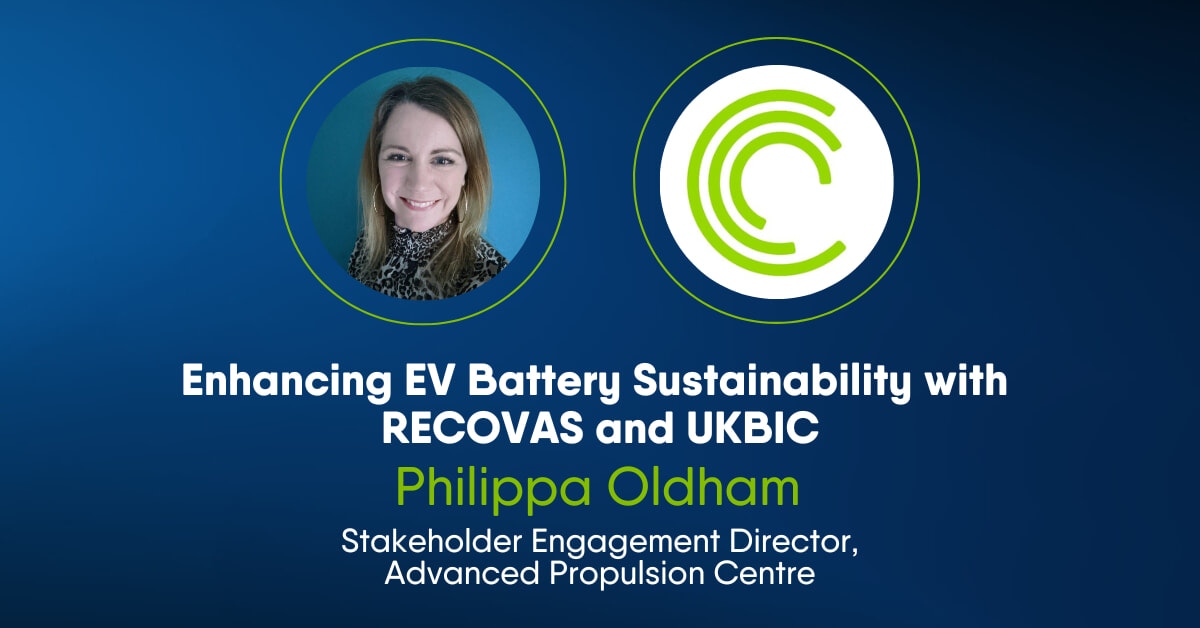CHOOSE
A DIFFERENT TERRITORY

As economies around the world get ready to decarbonise in the decades ahead, preparing the transport industry for this transition provides one of the biggest challenges for policy makers, manufacturers and for the supply chains upon which they rely.
With the essential support and expertise of the Advanced Propulsion Centre UK (APC), RECOVAS is one project that is seeking to create a commercial-scale circular economy for end-of-life electric vehicle (EV) batteries. This represents a vital step as the industry develops the innovative recycling infrastructure upon which a future, sustainable road transport sector can be forged.
“Our organisation was set up in 2013 as a joint initiative between government and industry, partly due to the need to accelerate the transition of the automotive industry towards net-zero and to support the industry on that journey,” says Philippa Oldham, Stakeholder Engagement Director at the Advanced Propulsion Centre.
Projects which have also been match funded through this process include the development of new fuel cell technology by Johnson Matthey and Ford’s investment in transforming its Halewood plant to be able to produce electric drive units for their vehicles.
In the case of RECOVAS, meanwhile, this has meant forming a consortium that includes Jaguar Land Rover, Bentley, and BMW, as well as global recycling leader EMR and others, such as Autocraft Solutions, Connected Energy, and the University of Warwick.
RECOVAS represents an important shift in the way the Advanced Propulsion Centre has seen its role.
“One of the things which has changed since we were set up in 2013 is that our priority has moved from simply focusing on what comes out of the tailpipe to a more holistic perspective. Once the industry has extracted raw materials from the ground, we need to find ways to ensure that we retain them within the system – whether that’s in the automotive sector or in industries such as energy storage,” says Philippa.
“At the same time, since 2018, there’s been an acknowledgement that there is help needed around capital investment and with up to £850 million committed by government towards the Automotive Transformation Fund. This is there to help industry de-risk some of its larger investments.”
While not directly helping to reduce the tailpipe emissions, RECOVAS is fundamental to the process of moving towards a more sustainable automotive industry by reducing the embedded carbon in the next generation of EV batteries.
“We need to understand those principles so that they can influence how we design, manufacture, disassemble and reuse or recycle these vehicles,” she adds. “There are other projects that we’re focused on, alongside RECOVAS, which are looking at how we can increase the amount of recycled content in some of the alloys that the car industry uses, as well as finding additional value during the recycling process by feeding material back into supply chains.”
Achieving this will require companies to work together like never before. After decades of fiercely protecting commercial information for fear of giving competitors an advantage, Philippa believes the industry is now waking up to the need to open up everything, from how their design teams work to their buying strategies and manufacturing processes:
“Silos are breaking down and while, traditionally, each sector has worked very independently, there is now a greater understanding that we have to become more collaborative from the design process onwards.”
While this change of culture requires a huge shift for the whole industry, Philippa believes RECOVAS is helping the APC to better understand how it can contribute to a green transition:
“Being a part of RECOVAS is encouraging our organisation to look at how different business models in the automotive industry are likely to evolve in the years ahead and then engage businesses in every part of the supply chain along that journey.”